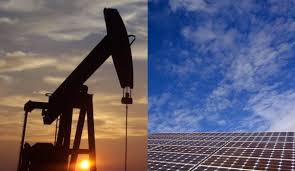ISLAMABAD: Leading up to the federal budget due to be presented in parliament on Wednesday (today), the Pakistan Economic Survey for 2023-24 revealed significant changes in Pakistan’s energy consumption patterns.
Renewable energy continued to increase its stakes in the energy mix while petrol consumption fell off the back of inflationary pressures as people reduced their spending in the face of rising fuel prices.
Electricity and Energy Sector Performance
As of the end of March 2024, Pakistan’s total installed electricity capacity stood at 42,131 MW, with the following breakdown: 10,681 MW from hydel sources (25.35%), 25,046 MW from thermal sources (59.45%), 3,545 MW from nuclear energy (8.41%), and 2,859 MW from renewable sources (6.79%). Between July 2023 and March 2024, the country generated 92,091 GWh of electricity, with 68,559 GWh being consumed.
The sectoral distribution of electricity consumption during this period was as follows:
Household sector: 33,737 GWh (49.2%)
Industrial sector: 18,022 GWh (26.3%)
Agricultural sector: 6,905 GWh (10.1%)
Commercial sector: 5,365 GWh (7.8%)
Other sectors: 4,530 GWh (6.6%)
Net metering-based solar installations also saw substantial growth, reaching 117,807 installations with a cumulative capacity of 1,822 MW as of March 2024. The six operational nuclear power plants, with a combined installed capacity of 3,530 MW, contributed approximately 16,753 million units of electricity, maintaining a monthly share between 12.8% and 25.8% of total electricity generation during the reviewed period.
Oil and Gas Consumption
Total petroleum product consumption decreased by 7.2% during July-March FY2024, amounting to 12.30 million tonnes. The transport sector remained the largest consumer of petroleum products, accounting for 79% of total demand, although the demand for Motor Spirit (MS) and High-Speed Diesel (HSD) declined due to high prices. The total gas consumption was reported at 3,207 MMCFD, with natural gas accounting for 2,512 MMCFD and Re-gasified Liquefied Natural Gas (RLNG) for 695 MMCFD.
Coal Sector Developments
The coal sector played a significant role in the power sector, with 68.9% of the total coal consumption (11,906.7 thousand tonnes) used for electricity generation. The cement and brick kiln industries also remained notable consumers of coal.
Renewable Energy Initiatives
The Government of Pakistan has prioritized the transition to renewable energy sources, aiming to reduce its greenhouse gas emissions by 50% by 2030. Significant steps have been taken to develop wind and solar power projects, including the establishment of a wind power corridor along the southern coastal regions of Sindh and Balochistan.
Key initiatives
The successful completion of three solar projects by Scatec ASA in Sukkur, each with a capacity of 50 MW.
The near-completion of the 884 MW Suki Kinari Hydropower Project, expected to be operational by November 2024.
The ongoing construction of the 32 MW Bagasse-based Shah Taj Sugar Mills project in Mandi Bahauddin, set for commissioning by June 2024.
The government has also approved the Framework Guidelines for Fast Track Solar PV Initiatives 2022, which aims to add 6,000 MW of solar PV capacity primarily through competitive bidding. This includes projects at Kot Addu/Muzaffargarh, Jhang, and Layyah, among others.
Private Sector Engagement and PPIB’s Role
The Private Power and Infrastructure Board (PPIB) has been instrumental in promoting private investment in the power sector. Since its inception, PPIB has managed the development of 100 Independent Power Projects (IPPs) with a total capacity of 24,958 MW, attracting foreign direct investment of over US$33 billion. The PPIB continues to facilitate new projects, with a focus on indigenous Thar-coal and hydel resources to generate cheaper electricity.
Future Prospects and Government Initiatives
The Economic Survey emphasises the government’s commitment to reducing reliance on imported fossil fuels and promoting renewable energy sources. Under the Integrated Generation Capacity Expansion Plan (IGCEP) 2022, no new power plants based on imported fossil fuels will be inducted by 2030. Instead, the focus will be on increasing the share of hydel, wind, and solar power in the energy mix.
It is pertinent to mention that the Pakistan Economic Survey 2023-24 has highlighted significant progress and challenges in the country’s energy sector. The government’s efforts to promote renewable energy, reduce greenhouse gas emissions, and ensure energy security are pivotal for sustainable economic growth. The comprehensive analysis provided in the survey sets the stage for strategic planning and informed decision-making in the upcoming fiscal year.









